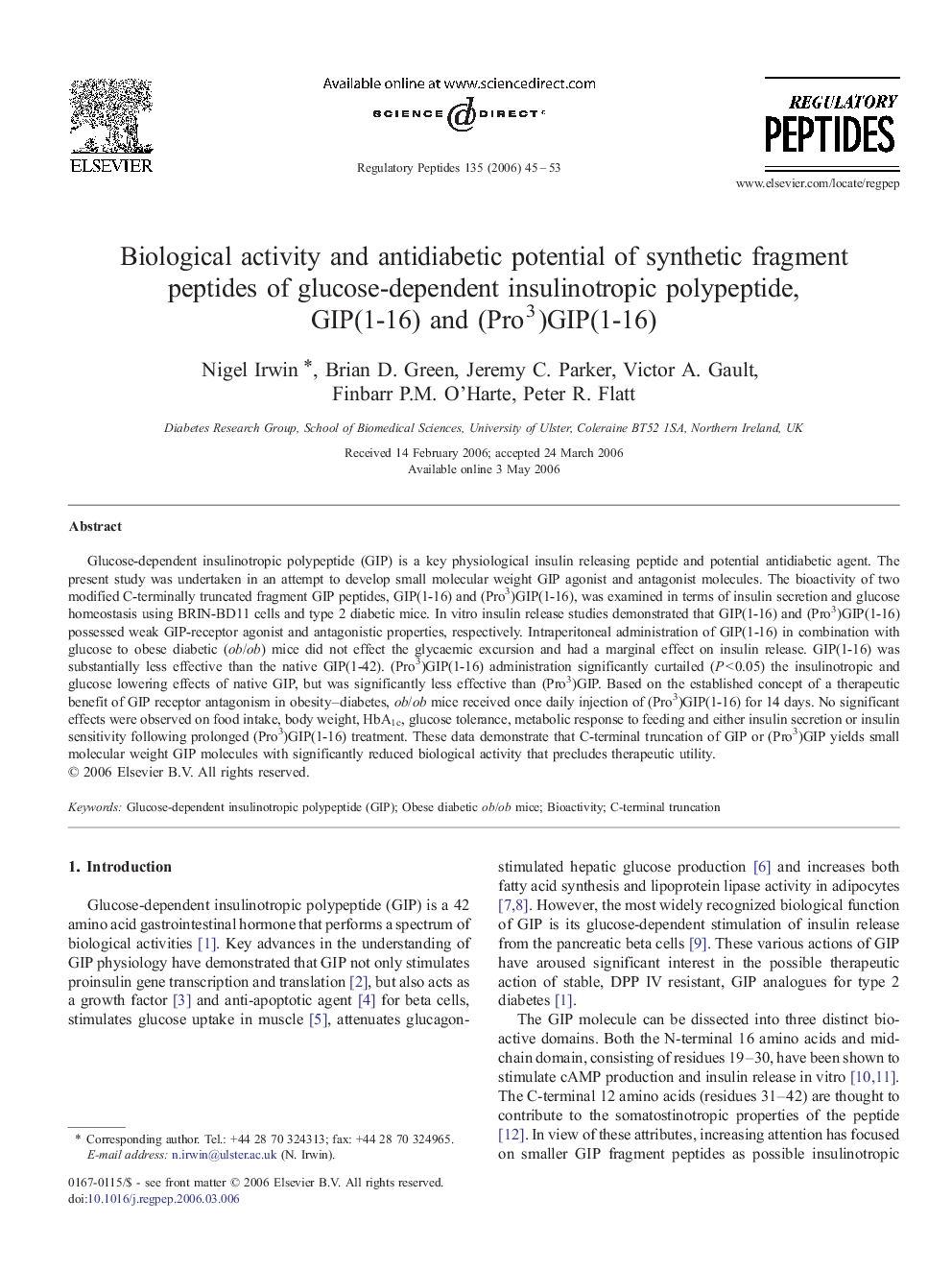| کد مقاله | کد نشریه | سال انتشار | مقاله انگلیسی | نسخه تمام متن |
|---|---|---|---|---|
| 2023398 | 1542451 | 2006 | 9 صفحه PDF | دانلود رایگان |

Glucose-dependent insulinotropic polypeptide (GIP) is a key physiological insulin releasing peptide and potential antidiabetic agent. The present study was undertaken in an attempt to develop small molecular weight GIP agonist and antagonist molecules. The bioactivity of two modified C-terminally truncated fragment GIP peptides, GIP(1-16) and (Pro3)GIP(1-16), was examined in terms of insulin secretion and glucose homeostasis using BRIN-BD11 cells and type 2 diabetic mice. In vitro insulin release studies demonstrated that GIP(1-16) and (Pro3)GIP(1-16) possessed weak GIP-receptor agonist and antagonistic properties, respectively. Intraperitoneal administration of GIP(1-16) in combination with glucose to obese diabetic (ob/ob) mice did not effect the glycaemic excursion and had a marginal effect on insulin release. GIP(1-16) was substantially less effective than the native GIP(1-42). (Pro3)GIP(1-16) administration significantly curtailed (P < 0.05) the insulinotropic and glucose lowering effects of native GIP, but was significantly less effective than (Pro3)GIP. Based on the established concept of a therapeutic benefit of GIP receptor antagonism in obesity–diabetes, ob/ob mice received once daily injection of (Pro3)GIP(1-16) for 14 days. No significant effects were observed on food intake, body weight, HbA1c, glucose tolerance, metabolic response to feeding and either insulin secretion or insulin sensitivity following prolonged (Pro3)GIP(1-16) treatment. These data demonstrate that C-terminal truncation of GIP or (Pro3)GIP yields small molecular weight GIP molecules with significantly reduced biological activity that precludes therapeutic utility.
Journal: Regulatory Peptides - Volume 135, Issues 1–2, 15 July 2006, Pages 45–53